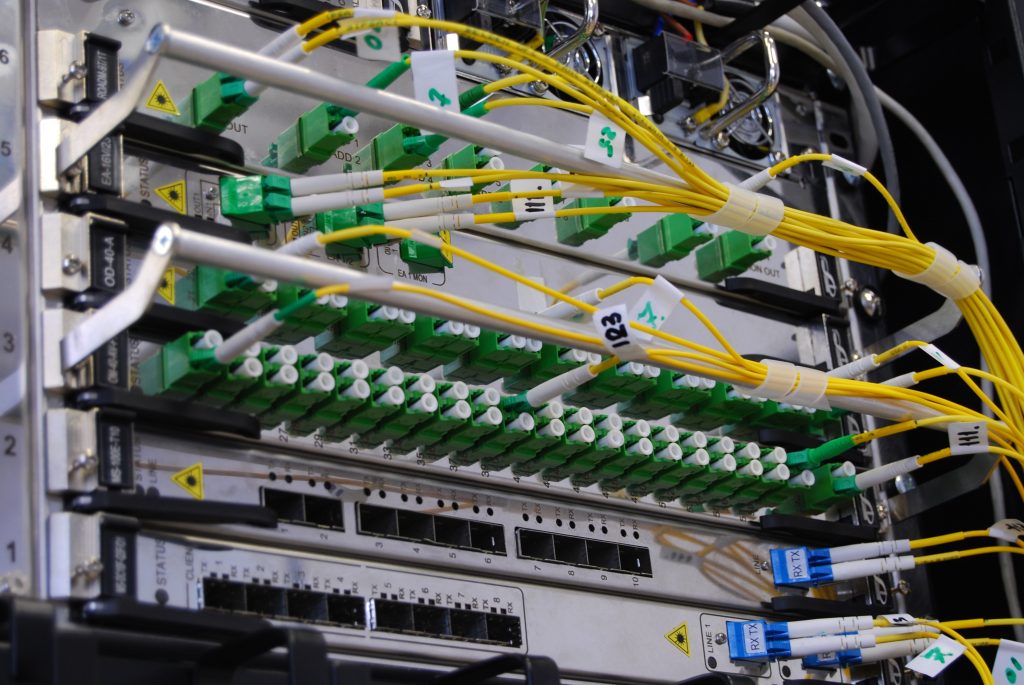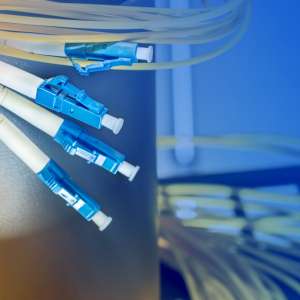The European Union’s ambitions for the Digital Single Market aim to evolve the region’s skills and infrastructure to enhance citizens’ quality of life. In an increasingly technology-dependent society, a better digital ecosystem is essential to empowering citizens and working towards a more inclusive society. This is especially in regard to educational and work opportunities and high-speed connectivity across the region is crucial to this goal. Thus, the expansion of the fibre network in Europe is an essential component.
Fibre rollout across Europe has already been a decade in the making. Now, bandwidth demand has intensified in the wake of the COVID-19 lockdowns and more operators are focused on FTTH/B to sustain the increase in traffic. This is backed by local authorities, who in collaboration with private finance, are pushing broadband acceleration. Meanwhile, progress in micro trenching technologies is making installing infrastructure more straightforward than ever.
However, this isn’t to say fibre expansion doesn’t face obstacles. The availability of skilled labour to drive this rollout is becoming more pronounced. Operators are having to look to alternative HR models to fill the gap, and meanwhile, red tape continues to cause project delays. It’s clear that to fulfil the EU’s ambitions for the Digital Single Market, we need flexible and agile strategies for fibre. That said, the outlook for the fibre network in Europe is looking positive. We’ll discuss the state of play, projections and opportunities here.

Table of Contents
Does Europe have gigabit internet?
Fibre optic cables provide gigabit connectivity, which means this infrastructure provides download speeds of up to 1 Gbps, the equivalent of 1,000 Mbps. This has significant implications for convenience and productivity, especially as working from home becomes more pervasive. Video conferencing is smooth and clear; large file downloads take seconds; and uploading data to the cloud is as quick and easy as transferring files to a USB.
These are but some of the benefits of optical fibre that could be brought to the average consumer. For businesses and public organisations, it has far bigger implications. The fibre network in Europe could facilitate massive data transfer, edge computing and myriad smart tools. These have the potential to make our societies more sustainable and efficient, providing a better quality of life for all. A clear example is smart city functions; for example, we could fully optimise the public transport network with laser-like accuracy to manage the frequency of services according to congestion. This would save fuel, enhance efficiency and improve the customer experience.
So does Europe have the infrastructure to seize the opportunities that gigabit internet provides? The short answer is yes – but not everywhere. One of the key objectives of the Digital Single Market is to make the digital ecosystem more inclusive. This means extending these functions out of major urban centres. Bringing this connectivity to rural areas or indeed Europe’s less productive economies is essential to bridging the digital gap and creating more opportunities for European citizens.
As it stands, there is 43.8% FTTH/B coverage in the EU27+UK, which accounts for 183 million homes, as of 2020. However, there is a significant gap between coverage and take up. Just 82 million of these 183 million properties are subscribers. That said, this is still 12 million more than the year before, with steady growth recorded since 2012. So what are the market dynamics affecting these statistics and what’s the outlook going forward?
Tendencies affecting the fibre network in Europe
In light of the impact of the COVID-19 crisis, telecom players have developed strategic plans to turbocharge fibre deployment. As discussed, this is in response to increased data demand as remote work and study becomes the norm. Private and public funders alike are on board, with new initiatives from municipalities to accelerate the rollout supported by various national and transnational pledges (such as the Digital Single Market plan).
Greenfield housing developments are equipped with FTTH/B as standard. Meanwhile, in more remote areas where the incentive for private operators to deploy is suppressed, local authorities are stepping in. Indeed, this makes increasing economic sense as remote workers show a preference for peaceful rural communities over urban areas. This is leading to some bold moves in some areas, where operators are switching off copper cable networks.
However, there are two major factors keeping growth steady as opposed to exponential: uptake and skills. The gap between coverage and subscriptions in the European fibre network is clear; this could be due to a variety of factors, namely awareness and advertising standards. Some consumers are unaware of the benefits of FTTH/B vs. FTTC or feel that some operators’ claims are misleading. One of our experts discussed this issue in more depth in a recent article.
Meanwhile, rollout delays are exacerbated by a skill shortage. A key area is construction, where according to a recent RICS Global Construction Monitor survey, labour shortages were cited by 72% of European respondents. However, the skills shortage begins further upstream. Experienced network designers are becoming harder and harder to find, and right now, we just don’t have enough talent to keep pace with the expansion of the fibre network in Europe. Certainly, you can take on more junior designers, but with tight turnaround times, the risk of lower quality outputs rises.
Projections for the five year period 2021–2026
So what projections are being made considering these market dynamics? According to recent research conducted by the FTTH Council Europe, market penetration in 2026 in the EU27+UK will stand at 53.8%, with penetration in some major economies like France and Spain being as high as 86.2%. Countries that were previously outliers will also move up the ranks, with penetration in Germany and the UK jumping from 8.4% to 59.9% and from 8.8 to 63.1% respectively. In regard to subscriptions specifically, Germany is set to see an increase of 385%.
The fibre network in Europe is also set to move closer to end-users. In September 2020, statistics regarding FTTH/B architecture evolution suggested 37.4% of new installations were set to be FTTB compared to 62.6% FTTH. Over the next five years, the council predicts that FTTH will gain more ground, with a full 70% of fibre installations being FTTH. These numbers are certainly encouraging and mark a consistent rise that’s been in process over the last ten years.
However, this isn’t to say there isn’t work to be done. In 2026, there will still be almost 10 million German homes still to be passed, and meanwhile, approximately 5 million in the United Kingdom. Russia will remain the leader for homes passed and within the eurozone, there is plenty of scope to attract subscribers. In Italy, for instance, only a quarter of homes passed are actually subscribers. Poland is a similar story, with just over 9 million of a potential 15 million homes left to connect.

Leveraging opportunities in the fibre network market
In 2026, the FTTH Council predicts there will be 197 million FTTH subscribers in Europe. The projections are optimistic, and to meet them, operators need to ensure they’re taking full advantage of the market conditions. The demand for data is a silver lining of the COVID-19 crisis, and coupled with EU targets, should carry the market along the path the FTTH predicts. However, there is potential for this to be pushed even further.
The key to truly eliminating the digital divide in Europe is talent. This is in regard to multiple challenges: first, infrastructure. If indeed experienced network designers are in short supply, how can the industry diversify its hiring practices in order to cast the net wider? Looking to the freelance market is an absolutely key strategy, especially in the context of the aftermath of COVID-19. The World Economic Forum has reported that 41% of workers globally are thinking of quitting their current job altogether and going freelance.
These professionals are experienced, agile, international and available. Considering the fast turnaround times and geographical specificities, these fibre infrastructure experts are essential to high quality, well-executed fibre rollout. The same goes for marketing; assuring consumer confidence is crucial to driving subscriptions and local expertise will be key to developing effective campaigns.
Source these professionals with Outvise
The demand for fibre as data usage and bandwidth has intensified. Do you need help to design, build or support a fibre network?
Take a look at our fibre experts:
Project Management & Execution
Pau Cerdà is co-founder of Outvise. Pau has founded several digital startups and consulting companies. He advised some major telecom and media groups. Former Oliver Wyman. Telecom Engineer + MBA (ESADE)





No comments yet
There are no comments on this post yet.